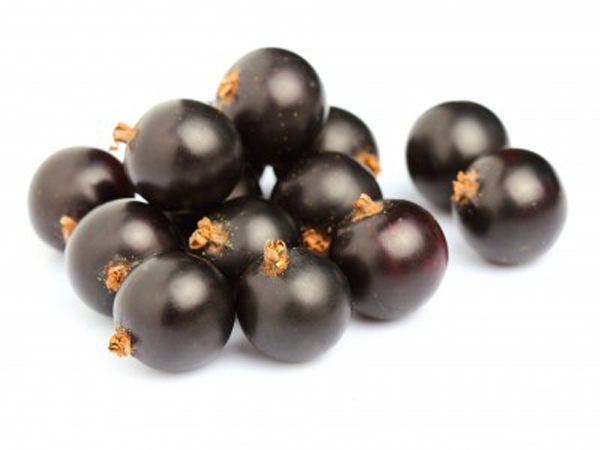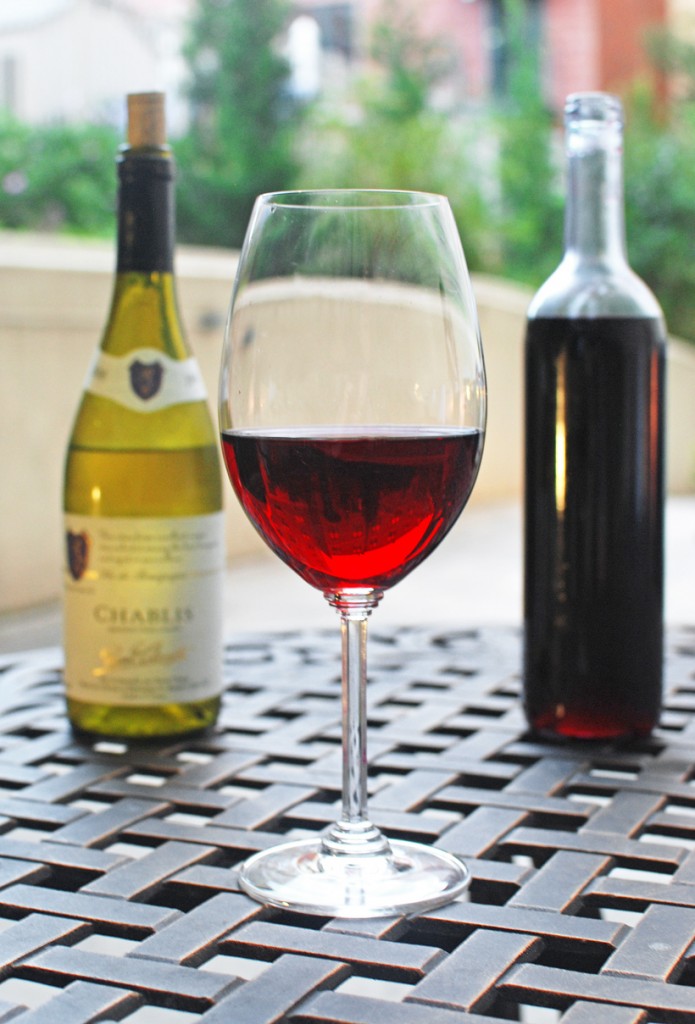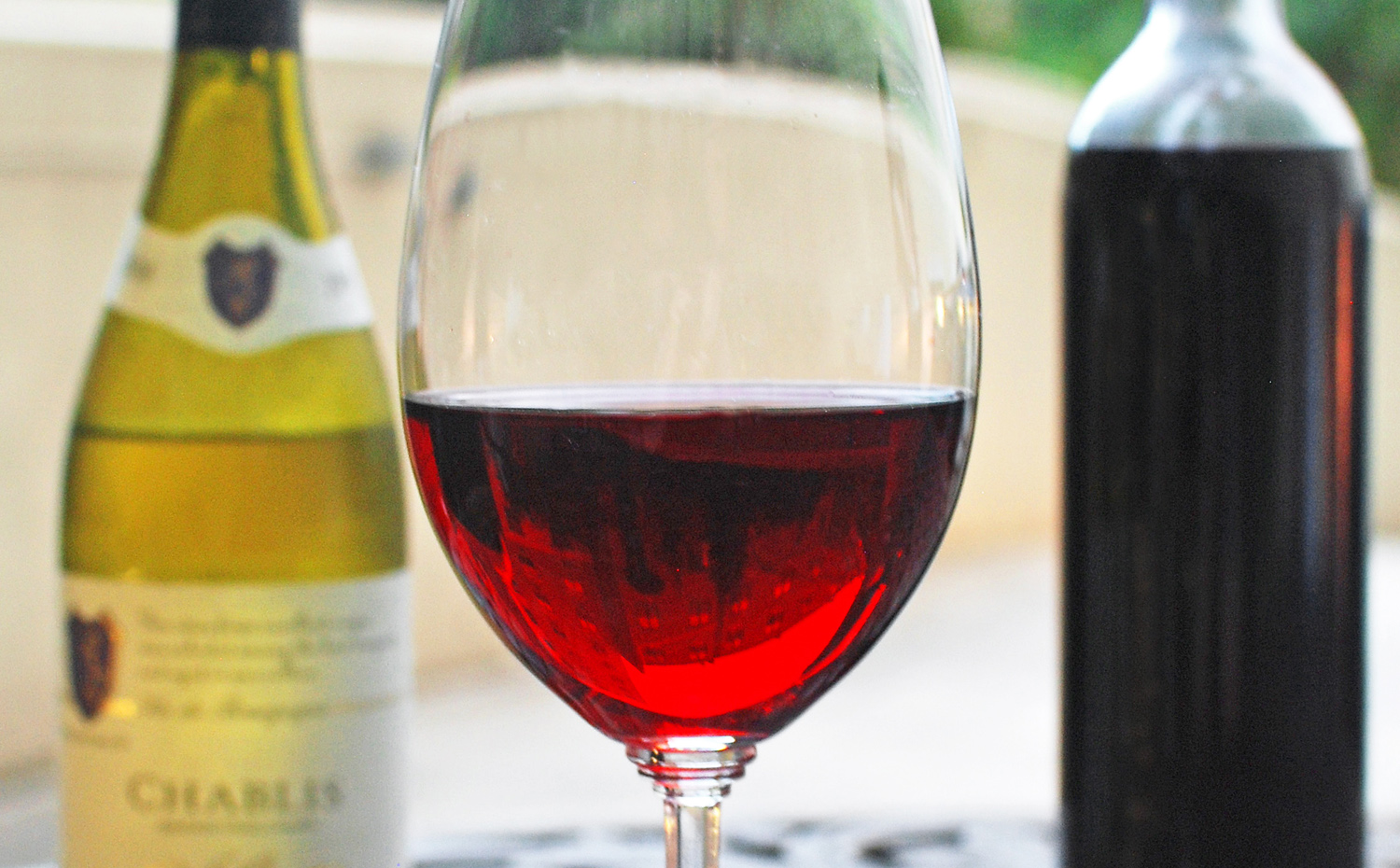Black currants are very popular throughout Europe, and Russia is the world’s largest producer of currants and gooseberries. While the leaves are used to pickle vegetables, the acidic but highly flavorful berries are made into preserves, jellies, juices, wines or liqueurs. In the U.S., cultivation was banned in the early 1900’s as it became a threat to the logging industry. In New York State the ban was only lifted in 2003 — I guess it took that long for everyone to finally agree that logging was declining for good. Until recently, the packaged dried fruits known as currants were simply small raisins, and in most cases they still are.
In early July, I was pleasantly surprised to find that Fishkill Farms offered black currant picking. Berries are expensive because they’re tedious and exhausting to pick. Pick them yourself and you can get a bucket for a song (well, almost).

I can only drink so much juice and eat so much jam, but I had a different plan: crème de cassis.
Although crème de cassis is beloved enough that the Burgundy region of France hosts a museum entirely dedicated to it, there are very few serious recipes available online. A short page here explains the basic principles: lightly crushing the berries, macerating in alcohol for 2 months, pressing and adding sugar. A recipe here follows the same method, with more details about the proportions. I made 4 important changes:
- The amount of sugar mentioned in the recipe is very confusing and most likely incorrect. I provide clear instructions.
- I doubled the amount of berries, as I really wanted something superior to many commercial products.
- I macerated the berries “only” for one month. The scientist in me fails to see what more could happen during the second month. The high alcohol content of the mixture means this process is very different from wine making, for example.
- As there will certainly be party-poopers who claim there’s nothing Eastern European about crème de cassis, I also included proportions for black currant liqueur! The only change is the amount of sugar.
The result is a rich cream with outstanding flavor. One could (and sometimes does) make a crème with any berries, but what makes crème de cassis special is the transformation of the currants’ flavor thanks to the alcohol maceration.
Enjoy with a white Burgundy or a sparkling wine. And don’t be shy: unlike what bars and restaurants seem to think, a dash of cassis isn’t nearly enough. I use around 1/4, and I’ve heard some people recommend up to 1/2! Once the bottle is open, oxidation will turn the liquor’s original bright color into a dull brown in a few months — so drink fast.

Crème de cassis and black currant liqueur
Yields almost 2 qt
3 lb black currants
3 lb 100-proof Stolichnaya vodka
up to 2 lb sugar (see below)
- Rinse the currants and remove the stems. Processing in small batches, briefly crush in a food processor or a blender at low speed. You want each berry to be chopped at least once to release the juices, without crushing the seeds.
- In a large bowl, mix the currants and the vodka. Transfer to plastic containers, dividing the berries more or less equally and filling the containers to the top. Cover and let macerate for 1 month in a dark, cool place.
- Pass the mixture through a chinois, pressing the berries with a spatula or a ladle. Pass the liquid through the chinois a second time without using the spatula. Weigh the liquid, and weigh the amount of sugar you need: use 20% of the liquid weight if you want to obtain a black currant liqueur, and 45% for a crème de cassis. Proceeding in batches, mix the liquid and the sugar in a blender at low speed for 5 minutes. Taste the result to make sure the sugar is fully dissolved.
- Transfer the crème de cassis or black currant liqueur to bottles, and cork.


15 comments
Guess I’m the opposite of a party-pooper, then. Just wanted to say that whether its crème de cassis or black currant liqueur? It’s gotta be Russian if you make it with Stolichnaya!!!
[…] by the success of my Crème de Cassis over the summer, I went back to Fishkill Farms to pick strawberries. Picking strawberries is tough […]
[…] As with most liqueurs, it is available in both commercial and artisan forms — and is also quite simple to make, if you have access to black […]
[…] As with most liqueurs, it is available in both commercial and artisan forms — and is also quite simple to make, if you have access to black […]
Thanks for the recipe. I appreciate the specifics of the sugar content, not many recipes have that. If using a lower alcohol content vodka – say 80 proof – would you see any difference in the maceration? Should I compensate for it by adding more?
Hi Dana, if you use a vodka with a lower alcohol content, your result will have a lower alcohol content, that’s all. Some brands of creme de cassis contain 16% alcohol, others 20%. It’s up to you to decide what you like best for what you’re doing!
This is macerating in my Liquor Making Cabinet (TM) as we speak! This is the most helpful recipe out of the ones I looked at, thanks for sharing.
I’ve been gifted with the chance to glean black currants and I picked about 6 quarts and THIS is the recipe I’m after! Will start it tonight and keep you posted.
Let me know how it came out!
It’s embarrassing how long I took to make this! I ended up freezing all those black currants and this summer, finally started the maceration process only I definitely neglected them for months. At long last, I strained and blended in the sugar just this evening and finally had my very first sip of Crème de Cassis and it’s so wonderful! Thank you for the clear instructions and wonderful recipe.
How much is 3 lbs of vodka???never seen any one use that unit of measurement for liquid.
Hi Summer, it’s super simple: place a large plastic container on your scale, and pour until the scale indicates 3 lb!
Hello,
Few questions;
When I cover the liquid to let it sit, should it be airtight – like a mason jar? Or just a cloth material so that it breathes?
Is this something that needs to be stored in fridge? Is it shelf stable unopened?
And last question – I’m using red currants – can I used the same recipe?
Thank you!
Hi Rachel, a Mason jar with a lid would be perfect. It doesn’t need to be stored in the fridge and can be kept for quite a long time (after a while, though, the liqueur might turn a bit brown due to oxidation). Red currants should work too but obviously, the taste will be different.
Thank you! Can’t wait to try!